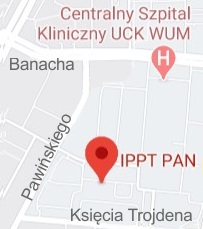| 1. |
Tarelnyk V.♦, Haponova O., Tarelnyk N.♦, Dumanchuk M.♦, Maifat M.♦, Mikulina M.♦, Kozin V.♦, Surface Properties of High-Strength Cast Iron Parts with Wear-Resistant Composite Coatings Synthesized by Electrospark Alloying Method. Pt. 2. Investigation of the Structure and Microhardness of the Treated Cast-Iron Surfaces,
Metallofizika i Noveishie Tekhnologii, ISSN: 1024-1809, DOI: 10.15407/mfint.47.07.0717, Vol.47, No.7, pp.717-736, 2025 Streszczenie:
The article discloses the method and the results of the metallographic studies and investigation of distribution of the coating elements along the depth of the layers of the high-strength ВЧ50 (VCh50) cast-iron samples, which have been coated by the electrospark alloying (ESA) method with the use of the compact electrode-tools (ETs) having a composition of (90%ВК6 (VK6)+10%1М) and 1М, while the ETs having been manufactured by powder metallurgy (PM) sintering method, as well as applying special technological saturating media (STSM). The metallographic studies have established that the structure of the surface layer consists of three areas, namely, the ‘white’ and transition layers having the thicknesses of 15–75 and 10–20 microns, respectively, and the base metal. The durometric studies have established that the microhardnesses of the ‘white’ layer and the transition zone are within the ranges 6200–13360 and 4290–4900 MPa, respectively. While deepening, the microhardness value is gradually decreasing from the maximum one on the surface of the coating. The highest microhardness values of 13260 and 12800 MPa were obtained, when using the compact electrode-tools made of hard alloy ВК6 (VK6) and the nichrome wire of Х20Н80 (Kh20N80), respectively, and applying the STNS of 0.5%Si+0.5%B+2%Cr+7%Ni+90% petroleum jelly and 5%Si+5%B+90% petroleum jelly, respectively. At the same time, the thickness values of their layers of increased hardness achieve 50 and 90 microns, respectively. The studies of the surface topography have shown that the surface layers of all the samples consist of three characteristic areas, namely, a smooth surface, a rough surface, and a pore. The micro-cracks and pores having sizes up to 1 μm and 1–3 μm, respectively, may sometimes be seen on the sample after the ESA process with the use of the electrodes made of the material of 90%ВК6 (VK6)+10%1M by the PM method. The x-ray spectral analysis has shown that the surface layers of all the samples consist of the base elements and alloying material at all the characteristic points. Słowa kluczowe:
electrospark alloying, electrode-tool, metallographic analysis, x-ray spectral analysis, surface layer, coating, structure, microhardness, cracks, pores, continuity Afiliacje autorów:
| Tarelnyk V. | - | Sumy National Agrarian University (UA) | | Haponova O. | - | IPPT PAN | | Tarelnyk N. | - | Sumy National Agrarian University (UA) | | Dumanchuk M. | - | inna afiliacja | | Maifat M. | - | inna afiliacja | | Mikulina M. | - | inna afiliacja | | Kozin V. | - | inna afiliacja |
|  | 40p. |
| 2. |
Tarelnyk V.♦, Haponova O.♦, Konoplianchenko V.♦, Tarelnyk N.♦, Dumanchuk M.♦, Mikulina M.♦, Pirogov V.♦, Gorovoy S.♦, Medvedchuk N.♦, Development Directed Choice System of the Most Efficient Technology for Improving Sliding Bearings Babbitt Covers Quality. Pt. 1. Peculiarities of Babbitt Coating Technologies,
Metallofizika i Noveishie Tekhnologii, ISSN: 1024-1809, DOI: 10.15407/mfint.44.11.1475, Vol.44, No.11, pp.1475-1493, 2022 Streszczenie:
The article substantiates the importance and relevance of increasing problem of the performance and service life of babbitt sliding bearings (SB), which are the rotors supports of a large number of centrifugal pumps, compressors, turbines and other dynamic equipment operating at high operating parameters (speeds, loads and temperatures), as well as in conditions of corrosive, abrasive and other types of working environment’s influence. The analysis of the babbitt SBs production technology and operating conditions showed that the reason for the decrease in their durability are factors that are formed both at the stage of manufacture and during operation. SB failure under normal operating conditions is a consequence of wear various types: cavitation, abrasive wear, damage due to plastic deformations, fatigue damage, etc. The antifriction layer wear resistance depends on the mode of operation and design of the bearing, the physical properties of the connection between the layer and the base, the rigidity of the shaft and the bed under the bearings. As established, the bearing anti-friction layer quality must be evaluated according to the following criteria: adhesion strength of the coating to the base, cohesive strength of the anti-friction layer, porosity, and homogeneity of the structure. As established, during the production of SBs, the formation by the method of electrospark alloying (ESA) of a copper intermediate layer, firmly bonded with steel substrate, and tin layer (formation of solid substitution solutions) and babbitt provides a stronger (by 35%) of adhesion, compared to traditional technology (steel 20 + babbitt), steel substrate with babbitt, as well as more intensive removal of heat from the friction zone. As determined, a new technology in which all operations are carried out by the ESA method can be a reserve for improving the babbitt coatings formation quality, which significantly affects the durability of the SB. As determined, in order to determine a more rational technology for applying babbitt coatings, it is necessary to develop a physically based mathematical model that relates the wear of a certain amount of babbitt to the frictional work spent on it. Słowa kluczowe:
sliding bearing, babbitt, coating, wear, structure, transition layer, adhesion strength, electrospark alloying, mathematical model Afiliacje autorów:
| Tarelnyk V. | - | Sumy National Agrarian University (UA) | | Haponova O. | - | inna afiliacja | | Konoplianchenko V. | - | inna afiliacja | | Tarelnyk N. | - | Sumy National Agrarian University (UA) | | Dumanchuk M. | - | inna afiliacja | | Mikulina M. | - | inna afiliacja | | Pirogov V. | - | inna afiliacja | | Gorovoy S. | - | inna afiliacja | | Medvedchuk N. | - | inna afiliacja |
|  | 40p. |
| 3. |
Tarelnyk V.♦, Haponova O.♦, Konoplianchenko V.♦, Tarelnyk N.♦, Mikulina M.♦, Gerasimenko V.♦, Vasylenko O.♦, Zubko V.♦, Melnyk V.♦, Properties of Surfaces Parts from X10CrNiTi18-10 Steel Operating in Conditions of Radiation Exposure Retailored by Electrospark Alloying. Pt. 3. X-ray Spectral Analysis of Retailored Coatings,
Metallofizika i Noveishie Tekhnologii, ISSN: 1024-1809, DOI: 10.15407/mfint.44.10.1323, Vol.44, No.10, pp.1323-1333, 2022 Streszczenie:
In article we present the results of studies of the local x-ray spectral analysis of coatings formed by the electrospark alloying (ESA) method at the discharge energy Wp = 0.13, 0.52 and 0.9 J by anodes from nickel and stainless steel X10CrNiTi18-10 on the cathode surface from X10CrNiTi18-10 steel. During ESA by stainless steel X10CrNiTi18-10 anode with an increase Wp in characteristic points and from the entire investigated surface of the coating, the quantitative elemental composition is not changed. The analysis of elements distribution over the depth of the formed layer is showed that when using the electrode tool from steel X10CrNiTi18-10 with an increase in Wp, there are a slight decrease in chromium and an increase in nickel and titanium in the surface layer. When steel X10CrNiTi18-10 is replaced by nickel with an increase in Wp, the concentration of nickel on the coating surface decreases from 95.38 to 89.04%. As the recession deepens from the coating surface, the concentration of nickel gradually decreases, respectively, at Wp = 0.13, 0.52 and 0.9 J from 96.29, 90.29 and 89.04% on the surface to 9.0, 10.30 and 9.9% at depth: 120, 165 and 240 μm. At the same time, the concentration of chromium, titanium and iron gradually increases. Słowa kluczowe:
electrospark alloying, nickel, steel, x-ray spectral analysis, scan step, topography, spectrum Afiliacje autorów:
| Tarelnyk V. | - | Sumy National Agrarian University (UA) | | Haponova O. | - | inna afiliacja | | Konoplianchenko V. | - | inna afiliacja | | Tarelnyk N. | - | Sumy National Agrarian University (UA) | | Mikulina M. | - | inna afiliacja | | Gerasimenko V. | - | inna afiliacja | | Vasylenko O. | - | inna afiliacja | | Zubko V. | - | inna afiliacja | | Melnyk V. | - | inna afiliacja |
|  | 40p. |



















